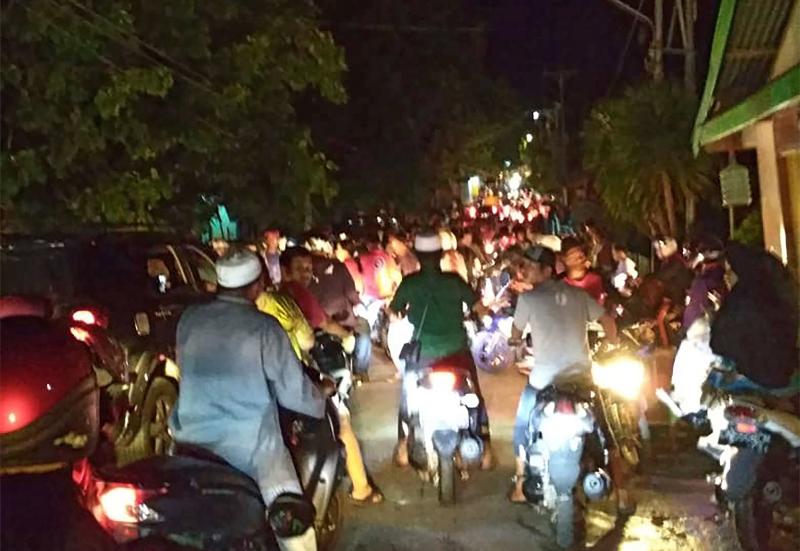Strong quake hits off Indonesia, one reported dead
Sign up now: Get insights on Asia's fast-moving developments

Residents, fearing a tsunami, rushing for higher ground after a strong 6.8-magnitude earthquake rocked Luwuk in Central Sulawesi, Indonesia, on April 12, 2019.
PHOTO: AFP
Follow topic:
JAKARTA (AFP) - A strong 6.8-magnitude earthquake rocked eastern Indonesia on Friday (April 12), reportedly killing one person and triggering a brief tsunami warning that sent panicked residents fleeing to higher ground.
The quake struck at a relatively shallow depth of 17km off the east coast of Sulawesi island, the US Geological Survey said, where a 7.5-magnitude quake-tsunami around the city of Palu killed more than 4,300 people last year.
Three light-to-moderate aftershocks occurred in the same area following the initial quake Friday, USGS reported.
Indonesia's disaster agency issued a tsunami warning for coastal communities in Morowali district, where residents were advised to move away from the coast.
The warning was later lifted by the agency, which had estimated the wave at under a half a metre.
Video footage from Luwuk city showed scared residents - some carrying children - running from their homes and racing to higher ground on motorcycles.
The USGS warned that considerable damage was possible in poorly built or badly designed structures.
Hapsah Abdul Madjid, who lives in Luwuk city in Banggai district, Central Sulawesi, where the tremor was felt strongly, said people fled to higher ground and the electricity was cut, adding that residents panicked as fears soared over an imminent tsunami.
One person trying to flee fell and died, Kompas.com news website reported, citing a provincial health worker.
Kompas identified the victim as Daeng Pasang, 66.
The tremor off the eastern coast of Sulawesi is on the other side of the island from disaster-hit Palu, where residents still felt the quake despite being hundreds of kilometres away.
"I ran straight outside after the earthquake - everything was swaying," 29-year-old Palu resident Mahfuzah told AFP.
Disaster prone
Thousands in Palu were still living in makeshift shelters six months after the late September disaster, with at least 170,000 residents of the city and surrounding districts displaced and entire neighbourhoods still in ruins, despite life returning to normal in other areas of the tsunami-struck city.
The force of last year's quake saw entire neighbourhoods levelled by liquefaction - a process where the ground starts behaving like a liquid and swallows up the earth like quicksand.
Apart from the damage to tens of thousands of buildings, the disaster destroyed fishing boats, shops and irrigation systems, robbing residents of their income.
Indonesia has said the damage bill in Palu topped US$900 million (S$1.2 billion).
The World Bank has offered the country up to US$1 billion in loans to get the city back on its feet.
Indonesia is one of the most disaster-prone nations on Earth due to its position straddling the so-called Pacific Ring of Fire, where tectonic plates collide.
On boxing day Dec 26, 2004, a 9.1-magnitude earthquake struck westernmost Aceh province, causing a tsunami and killing more than 170,000 in Indonesia.
Last year was also particularly tough, when Indonesia experienced more than 2,500 disasters ranging from a series of deadly earthquakes to killer landslides and volcanic eruptions.
The sprawling archipelago is dotted with more than 100 volcanoes, including one in the middle of the Sunda Strait between Java and Sumatra islands that erupted in late 2018 and unleashed a tsunami that killed more than 400 people.

